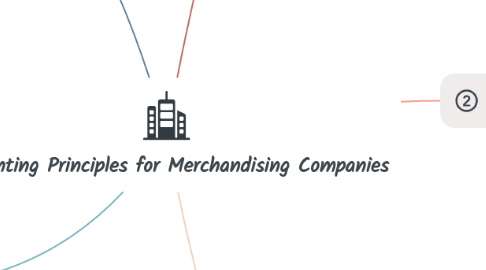
1. Income Statements:
1.1. Single-Step
1.1.1. A single-step income statement provides a straightforward overview of a business's profitability by using a single equation to calculate net income.
1.1.1.1. Net Income = (Revenues + Gains) – (Expenses + Losses)
1.1.2. Presents revenues, gains, expenses, and losses in a simple manner. Is easy to understand and prepare, making it suitable for smaller businesses or those in need of a quick overview of their financial performance.
1.2. Multi-Step
1.2.1. A multi-step income statement provides a detailed breakdown of a company's financial performance using separate equations to calculate net income.
1.2.1.1. Gross Profit = Net sales - cost of goods sold (COGS)
1.2.1.2. Operating Income = Gross profit - operating expenses
1.2.1.3. Net Income = Operating income + non-operating income
1.2.2. Differentiates between operating revenues and expenses directly linked to core operations (e.g., sales, COGS) and non-operating items (e.g., interest income, asset sales).
2. Non-operating Activities:
2.1. Identify Non-Operating Activities
2.1.1. - Interest Revenue: Income earned from investments in financial instruments such as notes receivable. - Dividend Revenue: Income received from investments in the common stock of other companies. - Gains on Investments: Profits from the sale of investments in securities or other assets. - Other Revenues: Income from renting out company properties or other non-core activities.
2.2. Risk Assessment
2.2.1. - Market Risk: The potential loss due to changes in market prices affecting the value of investments. - Credit Risk: The risk that counterparties may default on their obligations, affecting interest or dividend income. - Liquidity Risk: The difficulty of converting investments into cash without significant loss. - Regulatory Risk: Changes in laws and regulations that could impact non-operating revenues or expenses.
2.3. Tracking Methods
2.3.1. - Manual Oversight: Periodic manual reviews by the accounting team to ensure accuracy and completeness of recorded transactions. - Reconciliation: Regular reconciliation of investment accounts and interest/dividend receivables with statements from financial institutions.
2.4. Review and Reporting
2.4.1. - Internal Audits: Conduct internal audits to ensure compliance with internal controls and accuracy in reporting non-operating activities. - Risk Reports: Prepare regular risk assessment reports highlighting potential issues and recommending actions. - Management Reviews: Present findings to management for strategic decisions regarding investment portfolios and risk mitigation.
3. Merchandising Operations and Inventory Systems
3.1. Merchandising Operations
3.1.1. Types of Merchandise: - High unit value items (e.g., automobiles). - Low unit value items (e.g., consumer goods).
3.1.1.1. Characteristics: - Purchasing inventory - Storing and managing inventory. - Selling goods to customers.
3.1.2. Key Activity: - Companies that purchase finished goods for resale.
3.2. Inventory Systems
3.2.1. Periodic Inventory System
3.2.1.1. Do not keep detailed records of goods on hand.
3.2.1.1.1. Advantages: - Simplicity and lower cost. - Fewer record-keeping requirements. Disadvantages: - Less accurate inventory levels. - Potential for stockouts or overstock situations.
3.2.2. Perpetual Inventory System
3.2.2.1. Maintain detailed records of each inventory purchase and sale.
3.2.2.1.1. Advantages: - Accurate inventory tracking. - Immediate detection of discrepancies. Disadvantages: - Higher cost and complexity. - Requires sophisticated software and systems.
4. Recording Purchases and Sales:
4.1. Recording Purchase
4.1.1. Purchase of Inventory
4.1.1.1. The transaction needs to be recorded to reflect the increase in inventory and the obligation to pay the supplier.
4.1.1.1.1. Debit Inventory for the total cost (including freight if applicable), Credit Accounts Payable for the same amount.
4.1.2. Returns and Allowances
4.1.2.1. In returning defective or excess inventory, the purchaser needs to reverse part of the initial purchase entry.
4.1.2.1.1. Debit Accounts Payable and Credit Purchases Returns and Allowances
4.1.3. Purchases Discounts
4.1.3.1. Suppliers may offer discounts for early payment. When a discount is taken, it reduces the cost of the inventory.
4.1.3.1.1. Debit Accounts Payable and Credit Purchases Discounts
4.2. Recording Sales
4.2.1. Sale of Inventory
4.2.1.1. This is when you sell inventory for the full price. You should record the revenue from the sale and the receivable if the sale is on credit.
4.2.1.1.1. Debit Accounts Receivable and Credit Sales Revenue
4.2.2. Sales Returns and Allowances
4.2.2.1. When customers return goods, you need to reverse part of the sales revenue and the related receivable.
4.2.2.1.1. Debit the Sales Returns and and Credit Accounts Receivable.
4.2.3. Sales Discounts
4.2.3.1. Customers may be offered discounts for early payment. When a discount is taken, it reduces the revenue earned.
4.2.3.1.1. Debit Sales Discounts and Credit Accounts Receivable
5. Accounting Cycle:
5.1. Adjusting Entries for Merchandiser
5.1.1. Every adjusting entry can affect one income statement account and a balance sheet account
5.1.1.1. Merchandizing company can record it as an asset (merchandise inventory)
5.1.1.2. Also record it as an expense (cost of goods sold)
5.2. Closing Entries for Merchandiser
5.2.1. The first closing entry (Closing to Income Summary) will also include the ending inverntory
5.2.2. The second closing entry (Closing Expenses to Income Summary) will also include the beginning inventory
5.3. Difference from service companies
5.3.1. Merchandising company has an asset for inventory, while service company does not have one
5.3.2. Their differences are also the types of accounts payable
